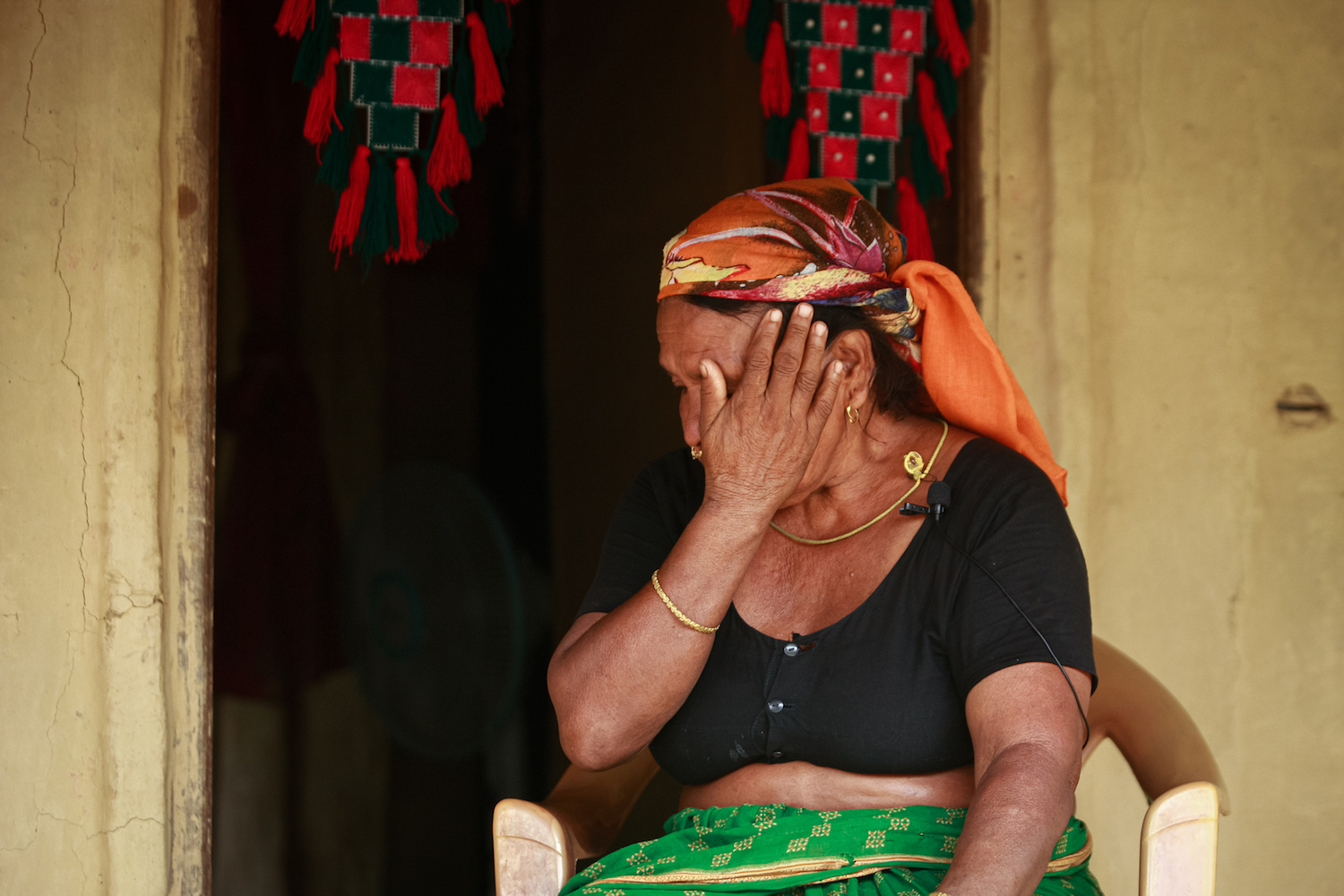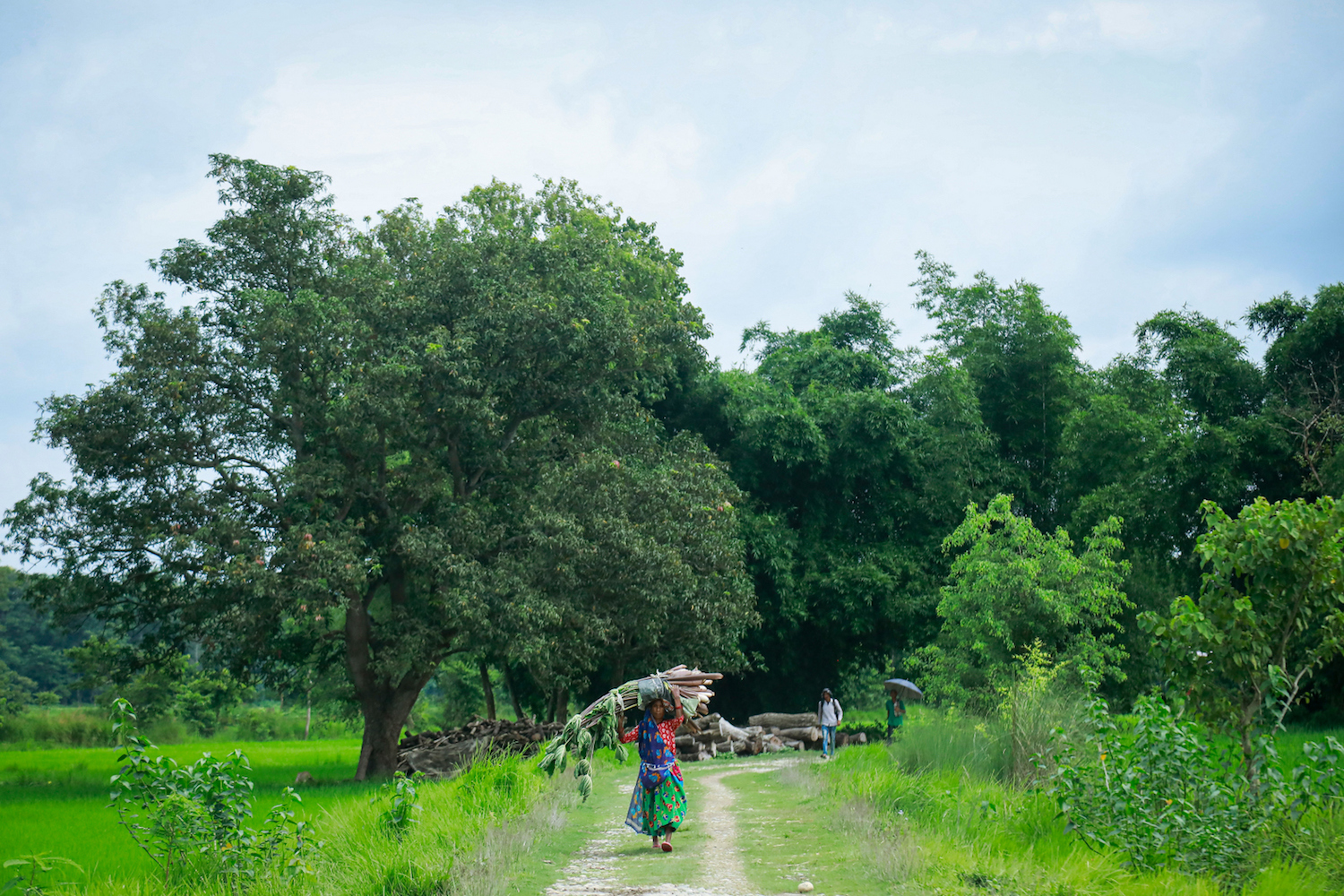Human-animal interface in Nepal wildlife corridor

1 0 March 2020. It was an ordinary day for Renuka Sunar collecting fodder in a forest near her home in Kathariya village. Suddenly, a tiger leaped out of the undergrowth and dragged her screaming and kicking. Neighbours heard her cries, and rushed out to help.
“When we heard the screaming we ran to where the sound was coming from, but she was nowhere to be found,” recalls mother-in-law Kaushila Sunar. “Later the police found her, but she was dead.”
At 60, Kaushila has been living in Kathariya for more than four decades but has never before experienced such increased frequency of tiger attacks. There was another close shave last month.
“I suddenly saw a tiger read to pounce on my grandchild, I screamed and managed to scare it away. They are attacking us in our homes following the smell of livestock, the fear keeps me awake all night,” she adds.


Kaushila is a widow and her only source of livelihood is now at risk due to the fear of tigers. She now has to raise her young grandchildren as well as protect the goats all by herself. But since the attack on Renuka, she has been afraid to venture into the jungle to collect fodder for the goats.

Four months before Renuka was killed, Dinesh Tharu of the nearby village of Madhuban who had gone into the forest to collect mushrooms was also attacked and taken by a tiger. His brother-in-law Ramesh who went looking for him suffered the same fate.
Ramita Chaudhari lost both her husband and brother on the same day due to the tiger attack. Dinesh, a construction worker in Kathmandu, and Ramita were married for 10 years and have two daughters. The family is landless.

“He took us to Kathmandu for a visit once, and wanted to enroll our children in a school there but now after his death I cannot even afford to send them to a government school here,” says Ramita whose older daughter is in Grade 2.
She adds: “I’d never known of a tiger attack before. It took both my husband and my brother together and left my family destitute. I wish someone could help me educate my daughters.”

Dinesh and Ramesh had married each other’s sisters, so like Ramita, 25-year-old Puja also lost both her husband and brother on the same day. The couple has two daughters aged three and one, and the family relied on Ramesh's income as a construction worker.
After the deaths, Puja took training in making potato chips but because of the Covid-19 lockdowns, she is yet to start a business. “Work is difficult to come by. But I want to send my children to school no matter how difficult.”



All these three attacks took place along the Khata Wildlife Corridor that links Nepal’s Bardia National Park with India’s Katarniyaghat Wildlife Sanctuary. The corridor is used by endangered mammals like tigers, elephants and rhinos, and the wildlife in the two-country sanctuary frequently move back and forth across the border.
There were a total of 87 tigers in Bardia National Park and buffer zone in the 2018 census. Another 28 big cats were recorded in Katarniyaghat in India. Similarly, a 2021 census registered a total of 120 wild elephants in Bardia and Katarniyaghat. There are also four rhinos translocated to Bardia from Chitwan which have moved over to the Indian side.

“We have installed a camera trap in the Khata corridor to monitor wildlife movement,” says Rabin Kadaria of National Trust for Nature Conservation (NTNC) Bardia. “The corridor has made mating between the wildlife across the border possible, resulting in new offspring, and preventing genetic degradation, which means biological diversification and healthier newborns.”


The Khata Corridor actually lies outside Bardia National Park and beyond its buffer zone, but is a protected area under the Forest Act 1993 but Nepal’s law doesn’t recognise it as a separate entity. Presently, it is managed by the Division Forest Office, and local communities have established a conservation committee for the corridor.
But the corridor is suffering from encroachment and human disturbance. It has been bifurcated by the Postal Highway, which has disrupted the north-south movement of wildlife. Though a 45m-wide wildlife bridge has been proposed in Madhuban to allow animals to cross, construction work has not started yet.
Khata Corridor has contributed to wildlife conservation, but increased frequency of animal attacks have added to the conservation challenges of endangered species in Nepal.
In the past two years, 23 people (20 in Bardia, two in Banke and one in Kailali districts) have lost their lives to tiger attack, according to Bardia National Park. Of the 20 in Bardia, seven were from the Khata Corridor.
"The human-tiger contact has become a bigger challenge than poaching. Conservation programs should look into reducing such conflicts," adds Kadaria of the NTNC Bardia.
Moreover, indigenous people and local communities rely on the forest for firewood, fodder and food, and it is impossible to prohibit them from entering the forest.
"Indigenous peoples have a right to forest food in the national parks, they should not be deprived of it. It is unacceptable that 23 people have been killed by wildlife in the past three years,” says Bharti Pathak of the Federation of Community Forestry Users.

The Chief Conservation Officer of Bardia National Park Bishnu Prasad Shrestha agrees, and is seeking federal government support for local communities with alternative livelihood options instead of barring them from the forest.
"Conservation efforts will be incomplete and unsuccessful unless people living near the protected areas take ownership for their protection," he says.
Nepal is an international model for wildlife conservation. It is the first tiger range country to meet the target of doubling its big cat population and is well on its way to achieving its commitment to increase that number to 250 by 2022, up from 121 in 2009. But this also means an increase in the frequency of tiger attacks, especially along the Khata Corridor.


In fact one-third of all wildlife attacks in the Banke-Bardia area have occurred in the municipality alongside the corridor, increasing from only three between 1993-2013 to seven since 2019.
In the 2021 journal article, 'Complex Consequences of Conservation Success: Emerging Human-Tiger Conflict in Nepal', conservationists have warned that the current level of human-wildlife contact in the Bardia-Banke complex will pose a serious risk to tiger conservation if not addressed on time.
However, another article published in the journal Oryx in 2016, 'Are Corridor Good for Tiger But Bad for People? An assessment of the Khata Corridor in Low Land Nepal', concluded that wildlife route was not any more problematic for locals and their livestock than in other national park buffer zones in Nepal.
But the recent attacks and deaths in the corridor have raised questions locally about the modality of tiger conservation. Kaushila Sunar, who lost her daughter-in-law to a tiger attack in March, says, "The government is only concerned about saving tigers. No one cares how we survive."
(Translated by Sonia Awale from the Nepali language original in Himal Khabar.)

Corridors of (nature's) power
If not for the pandemic and successive lockdowns, Bardia National Park this time of the year would be crowded with national and international visitors. The homestays along the Khata Wildlife Corridor that connects wilderness areas in India and Nepal used to be packed.
But in the absence of tourists, wild animals have reclaimed nature and their space. Villagers have reported coming across a large herd of elephants on the move and some have even sighted tigers in the wildlife corridor.

Salik Ram Chaudhary of the Khata Wildlife Corridor Homestay Management Committee grew up roaming these forests near his home. Every season, he used to guide tourists and organise safaris and wildlife excursions in Bardia National Park.
On 10 June, Chaudhary was on his way into the forest when he saw a herd of about 40 elephants, ranging from calves to adults, on the move just half a kilometre from the village.
“To say it was a sight to behold is an understatement — it is extremely rare to see such a large herd of elephants this close to human settlements,” he said.
Every year during September and October, Bardia elephants travel through the Shiva Community Forest in Madhuban Municipality to the Katerniaghat Wildlife Sanctuary in India’s Uttar Pradesh. They return to Nepal when the monsoon approaches. Ancestors of these great herds have been taking this annual migratory route for tens of thousands of years.
But because of lack of human movement, the herd this year did not bother to stay within the jungle corridor, and instead marched right through the village, lumbering peacefully past farms and stopping to graze along the way.
The elephants, however, were not the only wildlife sightings that Chaudhary had. On 28 May, the wildlife guide came across a tiger 400m away in the outskirts of the village.
“I threw caution to the winds and followed the tiger from a distance, taking photographs. The tiger knew I was there, but left me alone — both of us were at peace with the world,” says Chaudhary, who had never before seen a big cat from up close despite being a wildlife tracker and guide.
Half a kilometre away from the Dalla Homestay village, the tiger stopped at a watering hole in the buffer zone of Bardia National Park. It drank deeply.
During the hot summers, the water sources within the Bardia National Park that fill the natural watering holes dry up, forcing many wild animals into rivers and ponds near towns and villages.
Nepal’s conservation success has also led to overcrowding of big mammals in protected areas and national parks, in turn resulting in scarcity of prey populations. This has compelled tigers and elephants to venture into human settlement.
There has been an increase in human-animal confrontation. This is more prevalent in Khata Wildlife Corridor (read the report above) compared to other parts of western Nepal.
Conservation models need to include strategies to reduce human-animal conflict and local governments should introduce alternative livelihood options for the communities living near the protected areas to reduce their dependence on the forest. Similarly, infrastructure, new and those being upgraded need to include wildlife passes to reduce road kill.
On the flipside, the proximity of endangered species to human settlements has made frequent sightings quite common, boosting local eco-tourism and providing indigenous communities engaged in homestay business with extra income.
This was possible with the combined conservation effort of communities, local governments and environmentalists, and there are lessons to be learned.
Says Salik Ram Chaudhary: “As in Bardia, we need to ramp up conservation efforts across Nepal so that we can use the lockdown to share space and live with Nepal’s rich biodiversity.”

Read Also: "Nepali women at forefront of saving tigers", Kanchan Thapa




